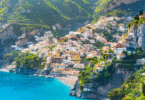October Wine & Food Diary
Wine and Food Diary of Giles MacDonogh on Connoisseur Magazine
In October the calendar filled up again. It was hard to resist the call to attend a tasting of Ukrainian wines. The London trade was generous, the venue came free and everybody helped as much as possible. Wines were shown from all over Ukraine, although the famous sparkling wine of Bakhmut was not represented. I can’t think there is much left of the vineyards or their famously deep cellars now. Let us hope they might one day be reborn.
Ukrainian wine is rather new to me. The country has a continental climate and the southern half experiences similar temperatures to Burgundy. Naturally it is warmer in the south near Odessa and the Crimea. There were no wines shown from the latter either for obvious reasons.








